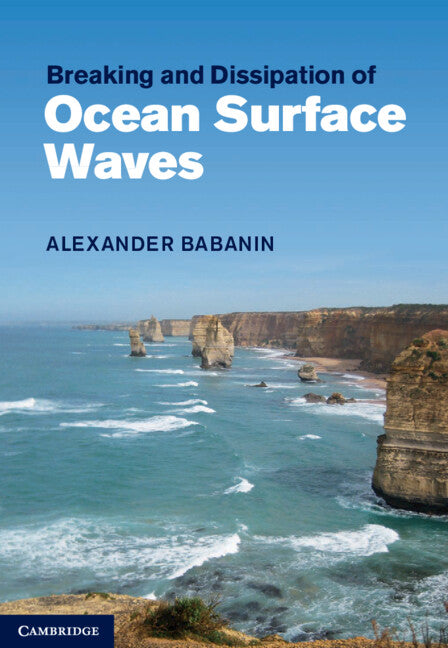Freshly Printed - allow 8 days lead
Couldn't load pickup availability
Breaking and Dissipation of Ocean Surface Waves
Outlines the state of the art in our understanding of wave breaking for researchers, modellers, engineers and graduate students in oceanography, meteorology and ocean engineering.
Alexander Babanin (Author)
9781107001589, Cambridge University Press
Hardback, published 19 May 2011
480 pages, 135 b/w illus. 6 tables
25.5 x 18 x 2.7 cm, 1.08 kg
Wave breaking represents one of the most interesting and challenging problems for fluid mechanics and physical oceanography. Over the last fifteen years our understanding has undergone a dramatic leap forward, and wave breaking has emerged as a process whose physics is clarified and quantified. Ocean wave breaking plays the primary role in the air-sea exchange of momentum, mass and heat, and it is of significant importance for ocean remote sensing, coastal and ocean engineering, navigation and other practical applications. This book outlines the state of the art in our understanding of wave breaking and presents the main outstanding problems. It is a valuable resource for anyone interested in this topic, including researchers, modellers, forecasters, engineers and graduate students in physical oceanography, meteorology and ocean engineering.
1. Introduction
2. Definitions for the wave breaking
3. Detection and measurements of the wave breaking
4. Fully non-linear analytical theories for surface waves and numerical simulations of the wave breaking
5. Wave breaking probability
6. Wave breaking severity
7. Energy dissipation across the wave spectrum
8. Non-dissipative effects of the breaking on the wave field
9. Role of wave breaking in the air-sea interaction
10. Conclusions: what else do we need to know about the wave breaking?
References
Index.
Subject Areas: Earth sciences [RB], Earth sciences, geography, environment, planning [R]


